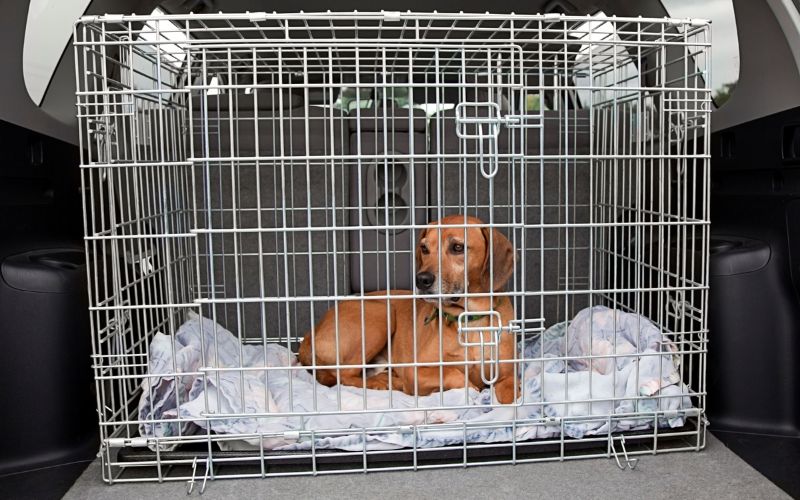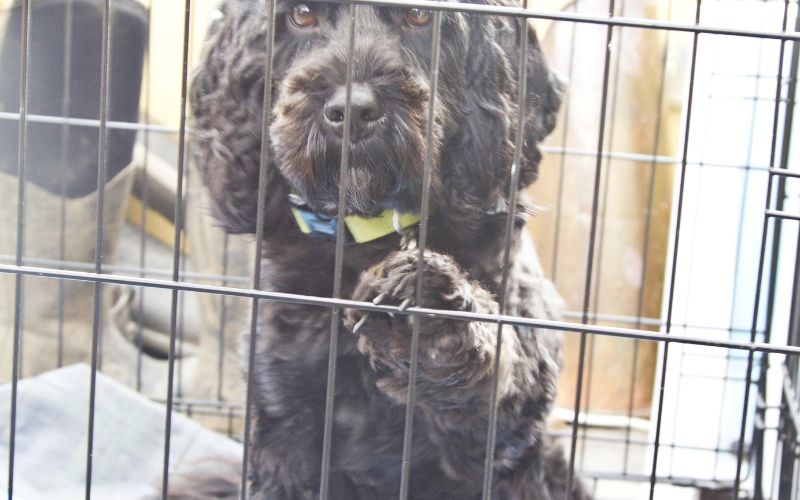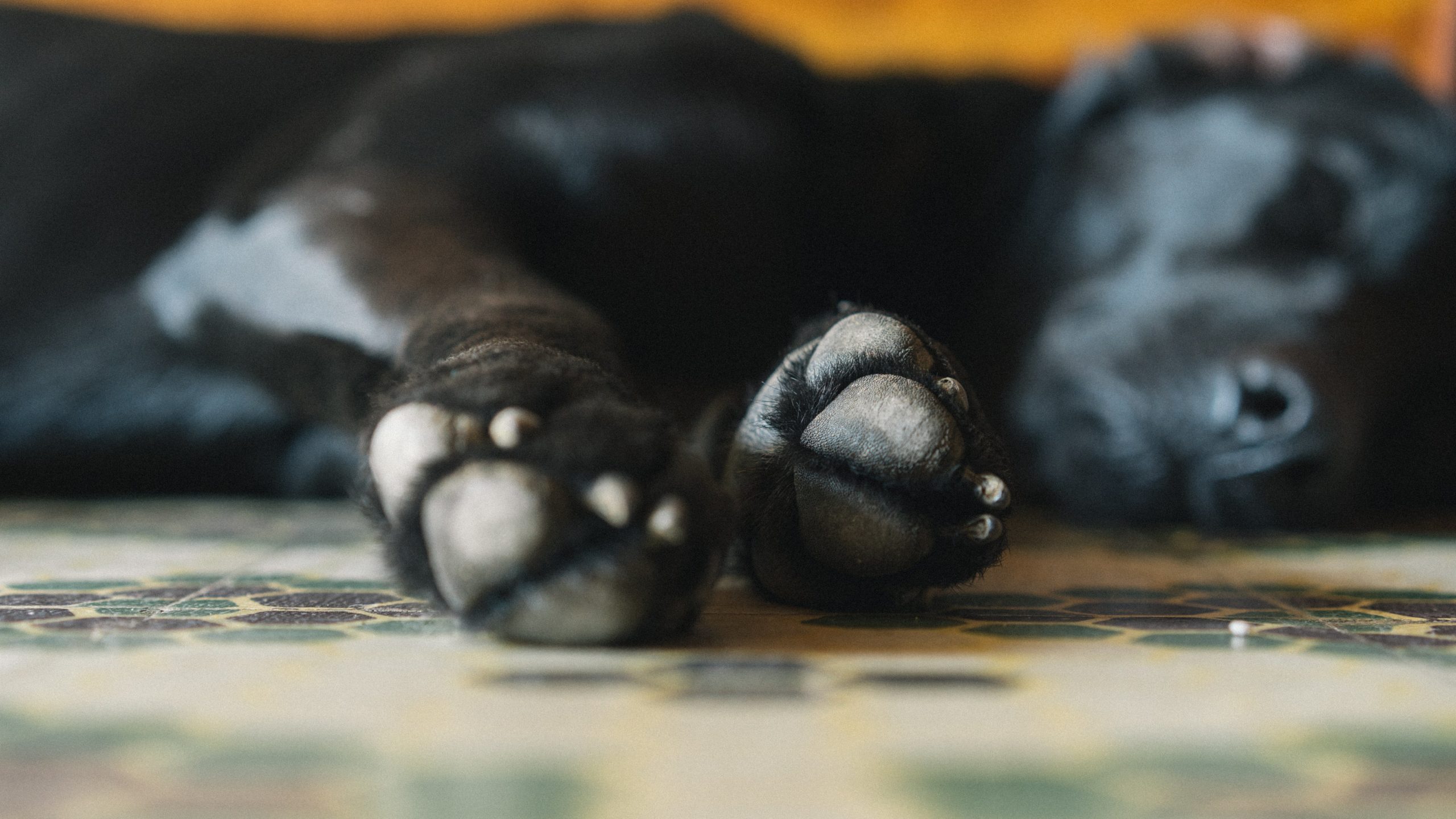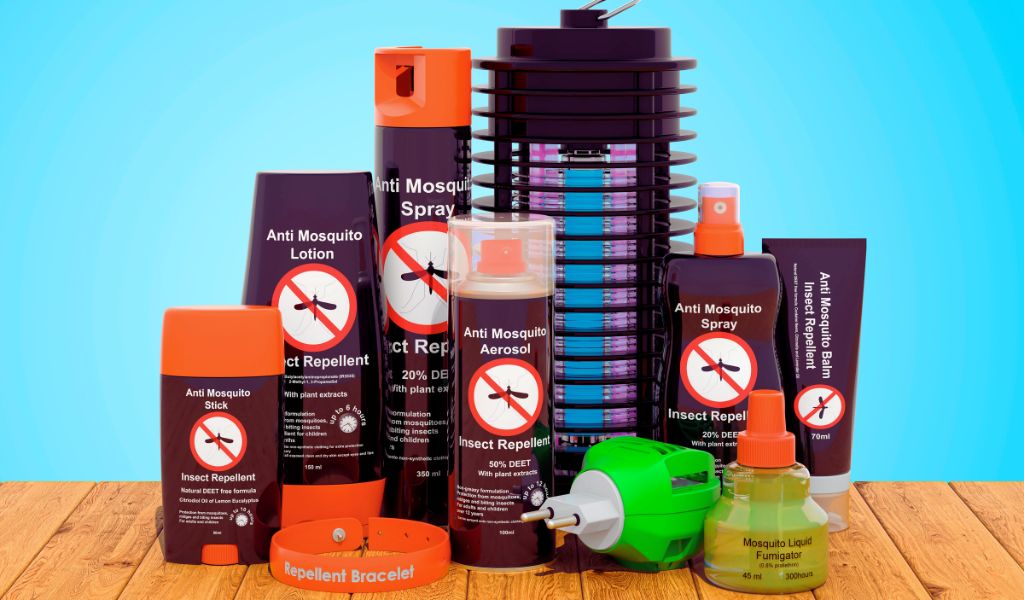When you get your Cocker Spaniel puppy it will be important for him to have his own place, where he can sleep, rest and take time out.
This place should be somewhere that helps the puppy to feel safe and secure and it should be his private place.
Puppies grow at a tremendous rate and you’ll find that after playing furiously and then eating, your spaniel will want to get some rest, and a crate or cage is an ideal place for him to feel safe. Your puppy’s crate should be only used as his safe place and never for housetraining.
What is the best size crate for a Cocker spaniel?
When choosing a crate for a Cocker Spaniel, it’s crucial to select one that provides enough space for the dog to stand, turn around, and lie down comfortably.
Cocker Spaniels are typically medium-sized dogs, so you’ll want to consider a crate that is suitable for their size and not too cramped.
Here are general guidelines for selecting a crate size for a Cocker Spaniel:
Length: Measure your dog from the tip of the nose to the base of the tail and add about 10-12 cm (4-5 inches) to determine the length of the crate.
Height: Measure your dog from the top of the head to the ground and add about 5-7 cm (2-3 inches) to determine the height of the crate.
Width: Ensure that the crate is wide enough for your dog to turn around comfortably.
Typically, a crate that is approximately 76 cm (30 inches) L x 53 cm (21 inches) W x 61 cm (24 inches) H should be suitable for a Cocker Spaniel.
However, individual dogs can vary in size, so it’s always best to measure your dog and choose a crate based on those measurements.
Remember to introduce your Cocker Spaniel to the crate gradually and make it a positive space with toys and comfortable bedding.
This will help your dog to associate the crate with positive experiences and feel safe and secure when inside it.
AT A GLANCE – POINTS TO CONSIDER WHEN CHOOSING A COCKER SPANIEL CRATE
when selecting a crate for a Cocker Spaniel, it’s vital to consider several key points to ensure that the crate is suitable, safe, and comfortable for your dog.
Here’s a list of important points to consider:
- Size of the Crate
Appropriate Size: Ensure the crate is large enough for your dog to stand, turn around, and lie down comfortably.
Measure Your Dog: Take accurate measurements of your dog’s height, length, and width to select the right-sized crate. - Material and Construction
Durability: Choose a crate made from durable materials that can withstand chewing and regular use.
Ventilation: Ensure the crate has adequate ventilation to provide fresh air and prevent overheating.
Secure Lock: Ensure the crate has a secure lock to prevent accidental escapes. - Comfort and Bedding
Comfortable Bedding: Consider adding a comfortable bed or padding to make the crate cosy.
Chew-Proof: Ensure bedding and any toys are durable and safe for your dog, especially if they are prone to chewing. - Portability and Storage
Weight: Consider the weight of the crate if you plan to travel with it.
Foldable: A crate that is foldable or easily disassembled can be useful for storage and travel. - Ease of Cleaning
Removable Tray: A crate with a removable tray can make cleaning easier.
Washable Bedding: Ensure any bedding is easy to clean and preferably machine washable. - Safety
No Sharp Edges: Ensure there are no sharp edges or points that could injure your dog.
Escape-Proof: Ensure your dog cannot easily escape or get stuck in any part of the crate. - Crate Training
Positive Association: Ensure the crate is associated with positive experiences through training.
Safe Toys: Consider adding safe toys to make the crate an engaging environment. - Location
Quiet Place: Place the crate in a quiet and safe location away from heavy foot traffic and noise.
Temperature: Ensure the crate is placed in an area with a stable and comfortable temperature. - Usage Purpose
Training: Consider how you will use the crate (e.g., house training, travel, etc.) and ensure it is suitable for that purpose.
Duration: Be mindful of the duration your Cocker Spaniel spends in the crate to ensure they also get ample exercise and interaction. - Legal and Ethical Considerations
Animal Welfare: Ensure that the use of the crate adheres to animal welfare guidelines and is not used as a form of punishment or for extended isolation. - Additional Features
Dividers: Some crates come with dividers which can be useful if you’re crate training a puppy and want the crate to grow with them.
Doors: Consider the number and type of doors, ensuring easy access for your dog and convenience for you. - Aesthetics
Design: Choose a crate that fits well with your home décor, especially if it will be placed in a common area.
Visibility: Ensure your dog can see out of the crate to feel more connected with the environment.
Is crate training necessary?
There is a real difference of opinion on what is known as crate training. Many people advocate the use of a crate as a way of house training or ‘potty’ training a puppy.
They base this thinking on the idea that a puppy or dog will not goto the toilet in his bed or the place that he is using for rest.
This is probably true as I would not want to goto the toilet where I slept either.
My view is that crate training is for lazy people who know little about dogs and care even less about them.
A crate should be used as a place of safety and comfort for a dog and not as some sort of control to stop him from going to the toilet.
Housetraining a puppy is easy and should not be a problem for a caring, observant dog owner who thinks about the puppy’s needs.
If you need to imprison a puppy in a cage to try to train him not to pee in the house then I suggest that you don’t get a dog and buy a goldfish instead.
Our crate selection for spaniels
Table could not be displayed.Should my dog have a bed in his crate?
Yes, providing a bed or some form of comfortable bedding in your dog’s crate is generally a good idea.
A bed can make the crate more comfortable and cosy for your Cocker Spaniel, and it can help to encourage positive associations with the crate.
Here are a few reasons why you might consider placing a bed in your dog’s crate:
Comfort: A bed can provide cushioning for your dog’s joints and bones, making it more comfortable for them to lie down and sleep.
Warmth: A bed can help to keep your dog warm, especially during the colder months.
Security: A bed can provide a sense of security and a familiar scent, which can be particularly comforting when travelling or in unfamiliar situations.
Encouraging Crate Training: A comfortable bed can make the crate more inviting, which can be helpful when crate training.
However, there are a few considerations to keep in mind:
Chewing: Some dogs may chew their bedding, especially puppies or dogs that are not used to being crated. If your dog tends to chew, you might consider providing a chew-resistant bed or waiting until your dog is more accustomed to the crate before introducing bedding.
Allergies or Skin Conditions: Ensure that the material of the bed does not irritate your dog’s skin and is suitable for any allergies they may have.
Cleaning: Choose a bed that is easy to clean and, if possible, machine washable, to maintain a clean environment for your dog.
Size: Ensure that the bed fits well inside the crate without taking up too much space, so your dog still has room to move and turn around comfortably.
Remember to observe your dog’s behaviour with the bed in the crate and make any necessary adjustments to ensure they are comfortable and safe.
Dog crates can be useful for spaniels
Having said my bit about the dinosaurs that use crates for ‘potty training’, I do believe that there are some good uses for a dog crate and that getting a Cocker Spaniel crate can be helpful.
I own two metal dog cages or crates. They make ideal indoor beds and little kennels for my dogs.
My two Cocker Spaniels, Boris and Nimrod, are very different in terms of their behaviour.
Boris has never really spent a great deal of time in a dog cage and, to be honest, doesn’t need to.
When we got Nimrod, I was working on a holiday park and, as a family, my company provided me with a caravan to live in.
It was great for my family as they had a free holiday and I didn’t have to travel to and from work.
When we got Nimrod he needed a bed, somewhere secure where he could sleep, stay warm and be safe.

We had an old dog cage that I’d bought locally several years ago and we decided to turn that into his bed.
It was ideal, we set it up, filled it with old blankets for him, put some of his toys in, and, when we went to bed, put a cover over so that he would stay warm and feel safe and secure.
Note I didn’t use this for ‘potty training’ nor did I attempt this, this crate/cage was Nimrod’s space and, when he was awake, if he felt tired he’d get in and goto bed – most of the time he dragged his toys out into the caravan.
Having this cage also meant that if I needed to nip out to the shop I could leave him, safe in the knowledge that he would be okay for a short time.
So I believe that a dog crate can be useful – for the right purposes.
Will a crate calm a Cocker spaniel down?
A crate can indeed be a useful tool in helping to calm a Cocker Spaniel, or any dog, when used correctly.
Dogs, by nature, are den animals and a crate can serve as a den-like space where they can retreat to when they need a safe, secure, and calm environment.
What size crate does my dog need?
Your dog will grow, and he’ll grow quickly if he is still a puppy.
If you intend to keep your dog cage and let your spaniel use it as ‘his place’ then you will need to allow for his development and growth.
A typical Cocker Spaniel and most of the other spaniel breeds, will need a crate that is defined as a medium sized crate.
Measurements tend to be at least 30 inches in length, 24 inches wide and 24 inches high.
Any crate or cage should be well made and ideally should have a removable base to make cleaning easier.
The door should open outwards and there should, ideally be two doors.
If the cage is metal then it helps if the metal is plastic coated as this will reduce the risk of corrosion and injuries.
Are all dog crates equal?
Probably not. The quality of steel dog crates can vary enormously and there can be different gaps and thickneses of construction materials.
It’s important to remember that you will need a crate that will not only be big enough for your dog, but will also be tough enough to prevent him from bending apart the bars and escaping.
Spaniels can be escape artists and, having had dogs escape from kennels in the past while I was out at work ( I had used the wrong type of fencing on the kennel run and they had simply forced their way out), I recommend that you choose the best quality cage that you can afford,
Remember the crate/cage is not somewhere for you to lock your dog into for hours on end, you should only use it as a very short term measure while you need to make sure he is safe, and I mean very short term, like less than an hour.

Is it cruel to use a crate for a spaniel?
It depends on you and your ideas of what you use a crate for.
I’ve already lodged my objections to using crates for housetraining. I feel that this is unnecessary and is a cruel and demeaning way to try and ‘train’ a puppy. You’ll teach him nothing.
Likewise if you use a crate for punishment – better that you get a hamster than a dog.
What size crate does a Cocker spaniel need?
When considering a crate for a Cocker spaniel, it’s important to ensure that it’s both a safe and comfortable space for your dog. The crate should be large enough for your pet to stand, sit, turn around, and lie down comfortably.
Cocker Spaniels are typically considered a medium-sized breed, and they usually stand about 14-17 inches (36-43 cm) tall at the shoulder, and their length (from the base of the neck to the base of the tail) typically ranges from 12-15 inches (30-38 cm).
Based on these measurements, a good crate size to start with would be one designed for medium-sized dogs.
Specifically, a crate that’s approximately 30 inches (76 cm) long, 19 inches (48 cm) wide, and 21 inches (53 cm) high could be a suitable option.
The XL Dog Crate by MidWest
The XL Dog Crate by MidWest is a good choice for Cocker spaniels. With it’s spacious dimensions of 48L x 30W x 33H inches, this crate offers ample room for Cocker spaniels to move around comfortably.
One of the key advantages of this crate is the included divider. This panel allows you to customise the crate’s size according to your dog’s needs. It ensures that your Cocker spaniel has just the right amount of space, providing a cozy environment that promotes a sense of security and reduces anxiety.
The crate’s metal construction ensures durability and stability, and the folding design makes it easy to set up and transport, allowing you to conveniently take your pet on trips or store the crate when not in use.
Additionally, the floor protecting feet and leak-proof dog pan make maintenance hassle-free, preventing leaks from accidents and enabling you to provide a hygienic environment for your pet.
No products found.
FAQs
How can a crate benefit my Cocker spaniel?
Using a crate for a Cocker spaniel can provide a safe and comfortable den-like space where they can relax and feel secure. It can serve as a retreat for them during times of stress or when they need some alone time. Additionally, crates can be useful for managing separation anxiety or controlling behaviour in certain situations, such as when visitors come over or during travel.
What size crate should I get for my Cocker spaniel?
When choosing a crate for your Cocker spaniel, it’s important to consider their size and provide enough space for them to stand up, turn around, and lie down comfortably. Generally, a crate with dimensions around 36 inches in length, 24 inches in width, and 27 inches in height should be suitable for most adult Cockers. However, it’s always best to measure your specific dog and consult the crate sizing guidelines provided by the manufacturer.
How can I make the crate a positive and inviting space for my Cocker spaniel?
To make the crate appealing to your Cocker spaniel, you can create a cozy environment by adding a soft bed or blanket, some favourite toys, and perhaps an article of clothing with your scent. You can also encourage your dog to enter the crate by using treats or their meals as rewards. Gradually increasing the time your dog spends in the crate and associating it with positive experiences can help them develop a positive association with the crate.
How long can I safely leave my Cocker spaniel in a crate?
Cocker spaniels are social dogs that thrive on human companionship, so it’s generally not recommended to leave them in a crate for extended periods. However, if necessary, adult dogs can typically tolerate being crated for up to 4 to 6 hours during the day, as long as they have had adequate exercise, mental stimulation, and opportunities for bathroom breaks before and after crate time. Puppies, on the other hand, have limited bladder control and should not be crated for more than a few hours at a time.
Are there any potential risks or concerns associated with using a crate for my Cocker spaniel?
While crates can be beneficial, it’s important to use them responsibly. Some dogs may develop negative associations with crates if they are used as a form of punishment or confinement for excessively long periods. It’s crucial to provide plenty of exercise, mental stimulation, and social interaction outside of crate time to prevent boredom or frustration. Additionally, always ensure the crate is properly ventilated, free from hazards, and never leave your dog wearing a collar or any restrictive clothing while inside the crate to prevent the risk of entanglement or injury.
Final words
Used correctly, as a safe place, which belongs to your dog, a crate can be a useful addition to your home, your spaniel needs a place to call his own and a crate provides that option.
Use the crate sparingly and allow your spaniel to make it his safe place where he can rest and escape to for a while.
Last update on 2024-07-21 / Affiliate links / Images from Amazon Product Advertising API





